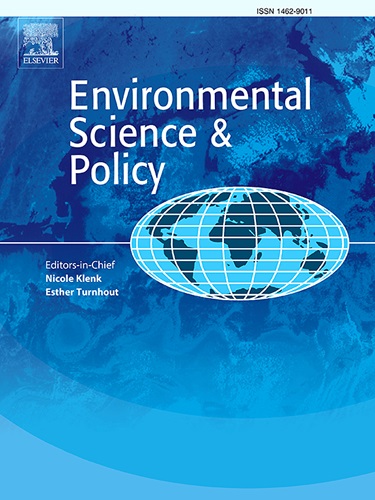What is ‘good evidence’ for environmental decision making? Insights from professionals working at the science-policy interface
IF 5.2
2区 环境科学与生态学
Q1 ENVIRONMENTAL SCIENCES
引用次数: 0
Abstract
Effective protection and management of natural ecosystems demands policies and decisions that are based on the best available evidence. However, it remains unclear how policymakers define evidence and prioritize or neglect different evidence types in environmental decisions. Here we analyze perspectives and experiences of Canadian professionals working at the science-policy interface to develop a definition of “good evidence” for environmental policy, and assess the evidence types (e.g., peer reviewed science, Indigenous knowledge, expert consultation) used most frequently to inform environmental decisions. We derived a new definition of “good evidence” from the participant responses, as follows: Good evidence for environmental policy is reliable, diverse information collected systematically through established methodologies (including Western social and natural science, Indigenous science, and place-based knowledge accumulated intergenerationally by close and continuous observation) that is credible and yields practical advice or relevant conclusions while being transparent about uncertainties. We found that a majority of environmental policymakers use peer reviewed literature mostly from the natural sciences to guide policy decisions. Evidence arising from local knowledge, Indigenous knowledge, and the social sciences tends to be neglected. However, there was a sense that perceptions of what constitutes evidence is changing and that implicit biases that prioritize some types of information over others are being questioned. Different conceptions of the salience, credibility and legitimacy of information types fundamentally shape debates around best practices for evidence-informed decision making. We suggest several routes toward a more holistic framing of environmental policy problems.
什么是环境决策的“好证据”?来自科学政策领域专业人士的见解
有效保护和管理自然生态系统需要基于现有最佳证据的政策和决定。然而,政策制定者在环境决策中如何定义证据以及优先考虑或忽视不同类型的证据仍不清楚。在这里,我们分析了在科学-政策界面工作的加拿大专业人员的观点和经验,以制定环境政策的“好证据”的定义,并评估了最常用于为环境决策提供信息的证据类型(例如,同行评议的科学、土著知识、专家咨询)。我们从参与者的回答中得出了“好证据”的新定义,如下:环境政策的好证据是可靠的,通过既定方法(包括西方社会和自然科学,土著科学,以及通过密切和持续观察而积累的基于地方的知识)系统收集的多样化信息,这些信息是可信的,可以提供实用的建议或相关的结论,同时对不确定性是透明的。我们发现,大多数环境政策制定者使用同行评议文献(主要来自自然科学)来指导政策决策。来自当地知识、土著知识和社会科学的证据往往被忽视。然而,有一种感觉是,对构成证据的东西的看法正在发生变化,而且优先考虑某些类型信息的隐性偏见正在受到质疑。关于信息类型的显著性、可信性和合法性的不同概念从根本上影响了围绕循证决策最佳做法的辩论。我们提出了几条更全面地构建环境政策问题框架的途径。
本文章由计算机程序翻译,如有差异,请以英文原文为准。
求助全文
约1分钟内获得全文
求助全文
来源期刊

Environmental Science & Policy
环境科学-环境科学
CiteScore
10.90
自引率
8.30%
发文量
332
审稿时长
68 days
期刊介绍:
Environmental Science & Policy promotes communication among government, business and industry, academia, and non-governmental organisations who are instrumental in the solution of environmental problems. It also seeks to advance interdisciplinary research of policy relevance on environmental issues such as climate change, biodiversity, environmental pollution and wastes, renewable and non-renewable natural resources, sustainability, and the interactions among these issues. The journal emphasises the linkages between these environmental issues and social and economic issues such as production, transport, consumption, growth, demographic changes, well-being, and health. However, the subject coverage will not be restricted to these issues and the introduction of new dimensions will be encouraged.
 求助内容:
求助内容: 应助结果提醒方式:
应助结果提醒方式:


